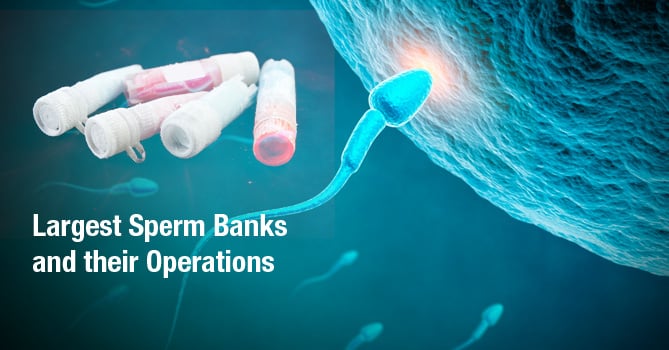A gentleman named Bertold Wiesner was the biological father to 600 children. This was in the 1940s. A lot has changed since then and world has grown little more conscious of its social responsibility. Wiesner, who went on to found the London Barton Clinic, could have got many more to share this responsibility had he been living in the 21st century. Nowadays, women are more vocal about their right to have a family; the fertility industry is seeking to improve their bottom line, and the sperm banks are mushrooming under a simple pretext: Demand for sperm donors is greater than the supply.
Here’s an interesting look at the dynamics of some of the world’s largest sperm banks and how they contribute to this ecosystem:
Cyros International, US
This US-headquartered sperm bank is in the business of creating human lives. The organization calls itself the largest in the industry and claims having an expansive donor base. According to the Guinness Book of Records, Cyros International has contributed in the highest number of pregnancies in the world that have happened through donor sperm. The CNNMoney report revealed last year (2015) that the organization has sent vials of sperm to more than 80 countries. In fact, more than 27,000 babies were born from its donors.
This US-based sperm bank maintains that its organizational objective is to give everyone the opportunity to experience the joys of parenthood and help single women (including lesbian and heterosexual couples) with the widest selection of donors. It’s for the same reason that Cyros gives free access to its online donor search.
London Sperm Bank, UK
Founded in 2010, the leading provider of donor sperm in the UK is already one of the largest sperm banks in the world that claims having around 10,000 vials in storage at any given time. Like other major banks, the USP of London Sperm Bank is the broad range of sperm samples they have at their disposal. In fact, it actively reaches out to potential donors through its Facebook page with an emotional message: fertility is a true gift of life.
The London Sperm Bank has been in the eye of the storm recently for banning men with dyslexia from donating sperm. Although the Human Fertilisation and Embryology Authority (HFEA) never prohibits people with dyslexia, dyspraxia and other common conditions from becoming donors, the sperm bank has defended their move by describing dyslexia as a “neurological disease.” This has opened up a debate as to whether there is enough medical evidence to consider dyslexia as a disability.
European Sperm Bank, Denmark
Like any other sperm bank, the Copenhagan-based European Sperm Bank pursues its objective of “helping humans have children, regardless of who they are or what they are.” The bank attracts a patient’s attention with its claim of following a “scientific approach with a human touch.” So, what does one of the largest sperm banks in the world do to ensure a product of the highest quality? It is one of the few sperm banks in the world that looks for Cystic Fibrosis gene mutations and conducts a thorough check on the family medical history. Additionally, it screens donors for HIV, Hepatitis, Syphilis, Gonorrhea, and Chlamydia.
A little bit of research on sperm banks in Denmark reveals that the country is considered the Sperm Capital of the World. The country is irrefutably a significant source of sperm used in the world. In fact, one-third of all the sperm imported into the UK is reportedly of Danish origin. The Danish sperm industry, which started in the 90s, earned over 1 billion Danish krone ($152m) in 2012. While some sperm banks around the world have less than 20 registered donors, Denmark alone witnesses up to a thousand men donating sperm every week.
The right to have children is universal, regardless of gender, orientation, and social standing. These sperm banks and donors are all working towards fulfilling that right and ensuring social equality.
